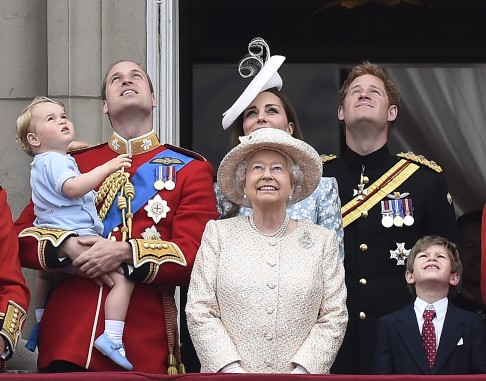She only became queen by a twist of fate but now, aged 89, Elizabeth II is about to become Britain’s longest-serving monarch in a reign spanning the post-war era to the digital age.
A constant in an ever-changing world, she is at the height of her prestige and “embodies the history of the 20th century”, according to historian Kate Williams.
The queen has met most of the major figures in recent history, from India’s first prime minister Jawaharlal Nehru to Japanese emperor Hirohito and French general turned statesman Charles de Gaulle.
South Africa’s anti-apartheid icon Nelson Mandela called her “my friend”, while her reign has seen the construction and the destruction of the Berlin Wall.
The sprawling British empire of the Victorian era, on which it was said that the sun never set, has shrunk to a few remnants during her reign. Most recently, Hong Kong was handed over to China in 1997.
Yet even in far-flung parts of the world, “when people refer to the queen they almost always mean our queen,” said John Major, one of the 12 prime ministers to have held office during her reign.
Britain’s slender republican movement condemns a system based on inherited privilege. But for many, the queen is a mainstay in a multi-ethnic country increasingly riven by regional divisions, including in Scotland, which voted against independence last year.
Elizabeth Alexandra Mary Windsor’s birth on April 21 1926 was a relatively minor event for a world teetering between two world wars and just three years away from the Great Depression.
The curly-haired “Lilibet” was destined for marriage, not the throne.
But after reigning for just 325 days, her childless uncle Edward VIII abdicated in 1936 to marry Wallis Simpson, a twice-divorced American.
Princess Elizabeth’s father inherited the crown as George VI and she suddenly became heir to the throne.
When the young Elizabeth and her sister Margaret had to move to Buckingham Palace, she asked her nanny: “What — you mean forever?”
On her 21st birthday, she vowed to spend her life serving her country.
On November 20, 1947 she married Philip — a distant cousin who renounced his titles as prince of Greece and Denmark and his career in the Royal Navy to be with her. She has described him as “my strength and stay”.
When George VI died at the age of 56 in 1952 she became queen aged just 25 and with two young children: Charles (born in 1948) and Anne (1950). Two others came later — Andrew (1960) and Edward (1964).
Her role is highly ceremonial and she remains above the fray of politics.
Every year, she reads out the programme of the government of the day at the State Opening of Parliament.
Her voice remains neutral and high-pitched, even when the proposals include measures she is suspected of opposing, such as banning the traditional sport of fox-hunting.
“Ma’am” as her subjects address her, also presides over the Commonwealth composed of 54 members, including 15 former colonies where she is still the sovereign, such as Australia and Canada.
Usually dressed in bright colours so as to be seen by everyone despite her petite size, she has carried out some groundbreaking and exotic visits including to China, the Vatican and the Cocos Islands.
“The primary role of the monarchy is to sell the British brand and the queen is very good at it,” said royal biographer Robert Jobson
Despite the widespread respect she now commands, her reign has had plenty of ups and downs.
In 1981, her heir Charles married Diana in a fairytale wedding that quickly turned sour despite the birth of their two sons William and Harry.
She called 1992 her “annus horribilis” when the marriages of three of her children — Charles, Anne and Andrew — fell apart and her castle in Windsor was badly burnt in a fire.
In 1997, the queen was accused of being out of touch as her subjects wept for the death of Diana in a Paris car crash while she remained at her country estate in Scotland for days before coming to acknowledge the crowds of mourners in London.
In the two decades since, though, there has been a remarkable turnaround for the monarchy — helped along by a powerful communications machine.
The queen has cut palace budgets and William’s marriage to commoner Kate Middleton has helped create the image of a more modern monarchy.
Her 66-year-old son Charles is increasingly taking her place at public engagements but experts agree that she will most likely hold on to the end and not follow her Dutch and Spanish royal peers by abdicating.
“It’s possible going forward if she wasn’t feeling particularly well or was physically infirm that her son Prince Charles could act as regent,” said Jobson. “Nobody is saying she would abdicate.”
She has visited 132 countries, posed for 139 portraits and given thousands of speeches, though never an interview. Her private life is largely a mystery.
The monarchy’s official website says she still goes horse riding and has 30 Corgi dogs in her palaces.
Rare indiscretions from palace insiders have revealed her love of the ”Racing Post” newspaper’s horse racing tips, a Dubonnet and gin before lunch and crossword puzzles.









1 Comments
Tara Nath Ghimire
Tara Nath Ghimire liked this on Facebook.